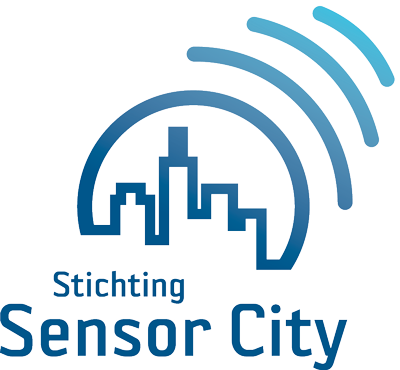One of the most promising and important developments for companies is the Internet of Things. Generally speaking, the Internet of Things refers to the networked interconnection of everyday objects, which are often equipped with ubiquitous intelligence (Xia et al, 2012). Companies are starting to explore the possibilities this development brings along. It is the next big thing and experts predict that companies who will not follow, will be left behind. This is because the Internet of Things will increase the ubiquity of the Internet by integrating every object for interaction via embedded systems, which leads to a highly distributed network of devices communicating with human beings as well as other devices (Xia et al, 2012). In this manner, the amount of information companies can acquire will tremendously increase, resulting in better decisions, services and products, as well as new business models.
What not many people know, is that there is a city in the Netherlands with a huge sensor network. This city is Assen, the capital of the province Drenthe. The project group named Sensor City Assen states that the purpose of Sensor City Assen is “the realization and in-position posture of a metering network in rollers for various applications”. To be able to measure in all sorts of different environments, it is necessary to have a large network of connection points for sensors, which are distributed regularly throughout the area. At the beginning, the goal was to improve traffic flow and environment in the city centre and surrounding region. The project group did this by developing real-time intelligent traffic management systems making use of different sensing sources of real-time traffic data. For this purpose, a real-time traffic estimation and prediction model will be developed and deployed (Friso, Zantema & Mein, 2013).
After this project had been proven very useful, it is now used for many other researches and tests. Companies and organizations can use the sensor network to acquire information and test their applications. The sensor network in Assen is an unique “living laboratory” and can be very valuable for companies and organizations. Nevertheless, the name recognition and attention it gets is little. Maybe sharing this project with my fellow students, who are seen as the “the leaders and forerunners of tomorrow”, will change this.
The project group has made a video, in which they explain Sensor City Assen. This video is definitely worth watching!
BIBLIOGRAPHY
Friso, K. Zantema, K. & Mein, E. 2013. Online Traffic Modelling in Assen: The Sensor City. Conference Paper, December 2013.
Xia, F. Yang, LT. Wang, L. & Vinel, A. 2012. Editorial Internet of Things. International Journal of Communication Systems. 25:1101–1102
Sensor City Assen: http://www.sensorcity.nl/


Really interesting to see how the Internet of Things can be able to really ease our daily lives. However, I’m personally kind of interested in what this will mean for our privacy. By linking all our activities together, companies might be able to build a whole profile up about us, and use this information to trying to get more customers. What is your opinion on the matter?
Very interesting! I really did not except Assen to be the first city in the world to have this, and I had no idea they did before reading your blog. However, like Karim, I am curious to see how privacy is being protected and what is means for our privacy. While I am sure there are a lot of benefits, as shown in the video, I am sure there are more disadvantages that are not mentioned in the video. Do you know/think a similar thing will be implemented throughout the Netherlands?
Dear Guy, very interesting story! I lived in Groningen for 5 years but I had no idea that this project was going on. I think this project could be of huge help in solving infrastructural problems in big cities. Like Amanda I am very curious whether there are any plans about implementing this idea in other cities as well. Unlike Karim and Amanda I don’t think privacy is a big issue since the sensors are not recording faces or licenseplates right? I think this project is meant to discover traffic patterns and is not linked to individuals. For example, I think governments should use this technique in infrastructural projects in order to track traffic behaviour, do you agree?